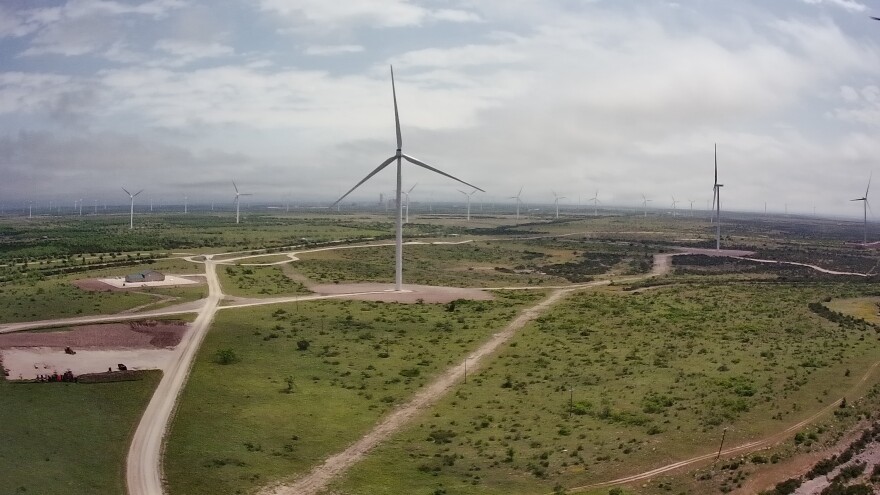Duke Energy is helping the city of Austin, Texas, meet its carbon-reduction goals by selling power from a solar farm that began commercial operation this week.
Duke's Sustainable Energy Solutions division flipped the switch on the Pflugerville Solar facility northeast of Austin. Duke acquired the project in December as it was under development by Canadian Solar Inc.
Meanwhile, the division's new Maryneal Windpower project in central Texas also began generating electricity this week. Phone company T-Mobile is buying the power under a long-term agreement.
Together, the two projects bring Duke Energy's total solar and wind output to 10,000 megawatts, enough to power 2.4 million homes and businesses, according to the company. About half of that is in the company's regulated utilities, including the Carolinas. The rest is part of Duke Energy Sustainable Solutions, an unregulated division that sells solar and wind energy to businesses, institutions and other utilities.
Brian Savoy, Duke's chief strategy and commercial officer, said the two projects are aimed at meeting or Duke's goal of shifting away from fossil fuels by increasing its renewable energy portfolio.
"10,000 megawatts, or 10 gigawatts, is a substantial number, and well on our way to the goals we set forth, with 16 gigawatts by 2025 and 24 (gigawatts) by 2030," Savoy said.

Duke now has about 200 solar and wind sites in 22 states. Additional projects that will total about 1,000 megawatts are under construction nationwide, including Florida, Texas and the Carolinas, the company says.
With 10,000 megawatts of renewable energy now in operation, Duke ranks among the nation's top 10 wind and solar producers.
Still, renewables account for just a fraction of the energy Duke generates from plants it owns. Most still comes from fossil fuels, about 61%, according to the company's latest sustainability report . Another 37% comes from nuclear power and just 2% comes from hydroelectric dams and other renewable sources.




